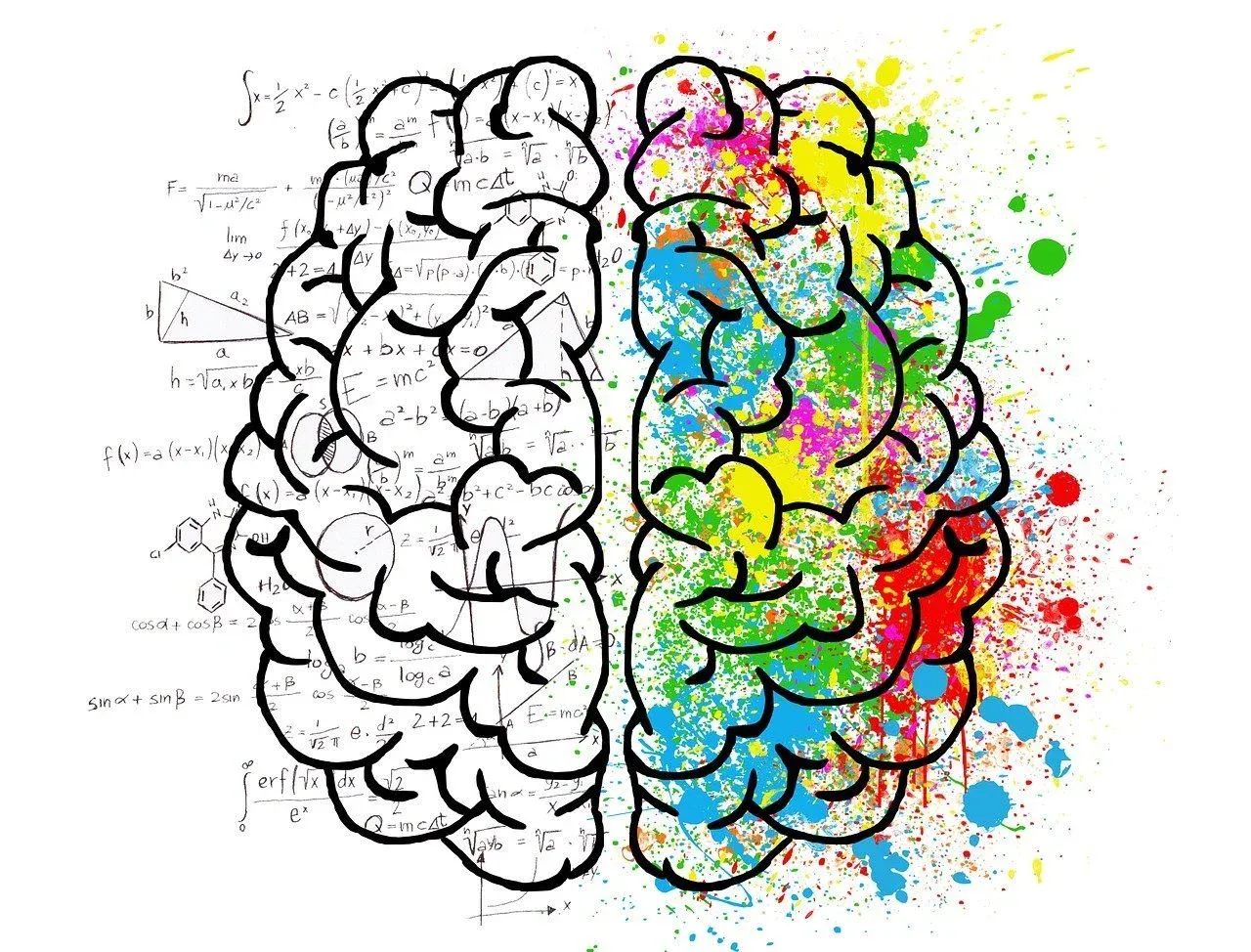Anatomically speaking
Did your school also have a mannequin in the science lab? We had a classic one: a skeleton to see the bones, and another with transparent skin, where you could also see the internal organs.
The brain was always the most fascinating part to observe. A central fissure, called the interhemispheric fissure, divides it into two symmetrical halves, making it resemble—not by chance—a walnut. But beneath that perfectly bilateral shape, a much more complex mechanism is hidden than was once thought.
The two hemispheres

The human brain is divided into two hemispheres connected by a structure called the corpus callosum, a dense network of nerve fibers that allows information to pass from one part to the other.
For a long time, the idea that each hemisphere had exclusive functions was widespread:
- The left was said to be the seat of logic, language, and analytical thinking.
- The right, on the other hand, would manage creativity, intuition, and artistic expression.
In reality, this division is an oversimplification. Modern neuroscience has shown that most complex cognitive functions involve both hemispheres in a complementary way.
It is true that there are local specializations: for example, language tends to be lateralized to the left in a large part of the population. But when you compose music, draw, or do calculations, you are not using "only" one half of the brain. Neural networks are activated in a distributed manner, creating a constant dialogue between the two parts.
A matter of habits
The most effective way to become ambidextrous is through small daily changes. It's not about turning everything upside down, but about introducing micro-exercises into your routine to stimulate the mind and body in a new way.
Using your non-dominant hand forces you to slow down, to pay more attention, to break out of automaticity. And right at that moment, when it seems difficult to grab a fork or write a letter, your brain really starts to train. New connections are activated, synapses are strengthened, and neural networks become more flexible.
Writing with the other hand
One of the most effective exercises is also one of the simplest: writing with the other hand.
Whether it's a shopping list, a travel diary, or just your name, try doing it with both hands. Write a sentence with the right, then one with the left. Or alternate word by word.
Don't worry about the handwriting at first: it's not a style contest. It's an exercise in attention, coordination, and mental flexibility.
Numerous studies show that the coordinated use of both hands can activate bilateral brain areas, improving interhemispheric communication. Over time, writing this way can help you express yourself with greater clarity and spontaneity.
Small habits for both hemispheres
Here are some daily actions to try with your non-dominant hand:
- Brush your teeth with the opposite hand.
- Wash dishes holding the sponge with your non-dominant hand.
- Use the computer mouse with your non-dominant hand for a few minutes a day (or even on alternate days).
- Eat by trying to use cutlery “in reverse”.
The mouse exercise is particularly useful for those who suffer from postural imbalances, as it helps reduce the overload on one side of the body, often caused by the repeated and unconscious use of the same hand or position.
The last exercise with cutlery also has a beneficial side effect: it helps you eat more slowly, aiding digestion and reducing the risk of overeating.
Remember: the key is consistency. A few minutes a day is enough. At first, you may feel clumsy, but it is precisely that little discomfort that signals that your brain is learning something new.
Write in the comments if you have tried any of these exercises or if you know others. Every suggestion is welcome!
Your complete training program
These small habits are like an appetizer: they whet your brain's appetite and give you a taste of the untapped potential hidden in your less-used hand.
If you now feel ready to sit down for the full meal, I have prepared a whole menu for you.
In my book "How to Become Ambidextrous", I have created a structured training program that guides you day by day. Not only will you find dozens of specific exercises for writing, drawing, and coordination, but also a complete test to measure your progress and finally understand how your hands can work together to enhance your mind.
Comments ( 1 )


Very usefull, thanks!